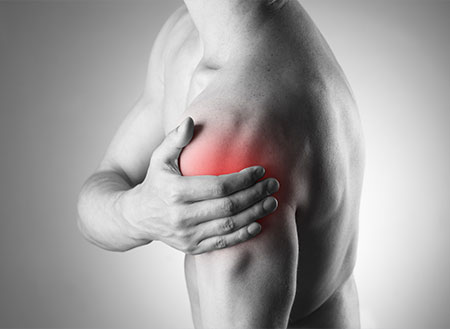The shoulder pain and stiffness that comes with all different types of shoulder pathology can be debilitating. Even though shoulder injuries don’t require canes, crutches, walkers, and wheelchairs, the functional deficits that result can be overwhelming. From getting dressed to daily hygiene to reaching for food in the pantry, shoulder dysfunction can be debilitating in daily life, especially if the dominant arm is the problem.
I recently spoke with a patient who had been dealing with shoulder dysfunction for quite some time and offered up some tips and tricks for navigating daily life when the shoulder isn’t up to par. Between his insight and my experience treating shoulders, we have put together these recommendations. Whether you are awaiting surgical intervention to restore function or are recovering from a recent shoulder surgery, you may find these strategies help you navigate this previously unknown territory.
For daily hygiene, he recommends obtaining supplies like a bidet add-on for toileting hygiene, a sponge on a handle for washing your back, and perhaps a grab-bar in the shower for a more steady in and out. These easy to find products allow for more independence in the bathroom. For getting dressed, he recommends loose fitting clothing with elastic waistbands rather than trying to fumble with zippers and buttons while in the sling. T-shirts with snaps from the head hole to the end of the sleeve can be useful for attending doctor’s appointments and physical therapy sessions while also affording an easier on and off. A good seamstress can place snaps (magnetic are best!) or Velcro along seams to make easily removable and wearable shirts for women and men. Some of these modified garments can be found for sale on Etsy. A sock helper can make getting both shoes and socks on your feet an easier task while avoiding the fall risk that can be sandals and flip-flops.
Navigating the kitchen can be as tedious as hygiene and dressing. First and foremost, moving commonly used items from higher shelves to counter tops and bottom cabinets can make life tremendously easier. Preparing and freezing meals prior to surgery can make the initial post-op period less challenging. Softer foods that do not require cutting with fork and knife or can be eaten with one hand are helpful as trying to cut or stabilize with an arm in a sling is both uncomfortable and potentially compromising. Having easy-to-prepare and easy-to-eat foods on hand can help you stay nourished to further facilitate healing.
Difficulty sleeping is one of the biggest complaints following shoulder injury or surgery. The inability to get comfortable for more than an hour or two seems to be universal. Sleeping somewhat upright in a recliner with the injured arm resting in the sling is typically recommended following surgery for 2 to 6 weeks. Pillows and bolsters can be used to help support the arm to provide improved comfort. As you transition back to your regular bed, a wedge pillow with extra arm and body support may be what you need to piece together some quality sleep. Oral sleep aids like melatonin and Tylenol PM can be helpful as well, especially when combined with a pre-bedtime ice application.
Though certainly not a walk in the park, recovery from shoulder injury can be made remarkably less frustrating with a little preparation and careful consideration. However, though these strategies can provide some degree of independence, nothing beats the care a support person can provide.


